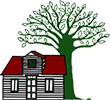06 May 2021
By monitoring certain aspects of urban greenery at selected locations, the aim is to set up a sustainable monitoring network that contributes to the preservation and maintenance of urban greenery and the benefits it provides to our well-being.
We want to involve as many individuals and social organizations as possible through the 'citizen science' concept for monitoring.
What is Citizen Science?
For the monitoring of urban green spaces, the aim is to allow citizens and social organizations to participate as much as possible in the collection of (scientific) information. In this way you, as a resident of Paramaribo, will be involved in research about your environment. As a participant, you are immediately acquainted with scientific research into green space and you gain more insight into your immediate environment.
There are two ways that it is done:
1: By adopting a temperature meter (Kestrel drop) to monitor the cooling effect of greenery.
2: By adopting a green location, alone or with a group of friends, to collect data on vegetation, use and maintenance.
Monitoring the cooling effect: Adopt a temperature meter
Urban greenery contributes to cooling the environment. This 'ecosystem service' is becoming increasingly important in the context of temperature rise as a result of climate change. This cooling effect is one of the things we want to monitor, through automatic temperature recordings at select locations.
Which locations?
From 2019, 10 temperature meters, called 'Kestrel Drops', have already been installed at various locations in Paramaribo. The temperature and humidity are still measured at these locations up to this day.
Several locations have been selected for the expansion of the temperature measurements.
The locations were selected on a number of factors, such as the occurrence of locations with lower temperatures according to satellite images, the presence or conspicuous absence of urban greenery and the geographical distribution.
Locations which still need a Kestrell drop:
- Ressort Blauwgrond address: area of Jozef Israelstreet- Anamoestreet
- Ressort Flora address: area south of the Jaggernath Lachmon street and Zorg en Hoop airport
- Ressort Latour address: Visserszorweg
How does it work?
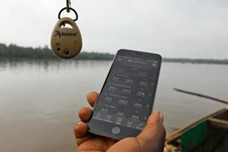
With a small meter (The Kestrel drop), with the size of an egg, the temperature is automatically registered every hour. The data can be downloaded and is sent to our team via an application on the mobile phone.
Monitoring greenery in the built environment: Adopt a green space
Urban greenery can provide both advantages and disadvantages. This depends on factors such as your personal perceptions, but much more on the type and quality of the greenery, accessibility, functionality and maintenance. If we as Surinamese want to work towards high-quality, public green spaces in our living environment and to promote the benefits of this, it is important to gain more insight into how things are going now.
Which locations?
- Rainville Resort: The Palm Garden
- Resort Beekhuizen- Friendship Square
- Resort Welgelegen address: area Toevluchtweg-Normandiestraat
- Resort Welgelegen address: Hendrikstraat
- Ressort Weg naar Zee address: Andromedastraat
- Resort Munder- Chiragali project
How does it work?
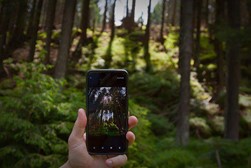
Using a mobile application, the allocated green space is visited and a digital questionnaire is filled in, which then automatically uploads when there is an internet connection. Monthly monitoring of an urban green area.
Monitoring sessions
The first monitoring sessions were held on May 6, 2021. These were sessions in which the instructions for those who have adopted a green location or temperature meter were discussed step by step. A few meters have been installed from June 2021 and data collection has started.
In total there were 11 volunteers who adopted a Kestrel drop. There are also 6 green locations adopted by some of the volunteers. There are 5 volunteers who have adopted both a drop and a green space from June 2021.
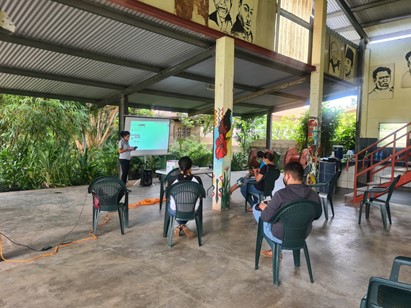
The volunteers were divided into groups of 5 where each received an explanation of the steps they should take each month.
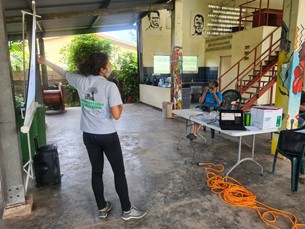
Currently there are already 19 Kestrel drops in Paramaribo and 7 green locations are being monitored.
With this first group of volunteers, a start has been made on systematically collecting data on urban greenery in Paramaribo. This is important to better understand how urban greenery functions, is used and contributes to our well-being in a country like Suriname.
This not only contributes to knowledge about urban greenery, ecosystem services and social perceptions in tropical, middle-income countries, but also better-informed decisions and policy can be made. In a follow-up project, the intention is to expand this monitoring network outside Paramaribo.
